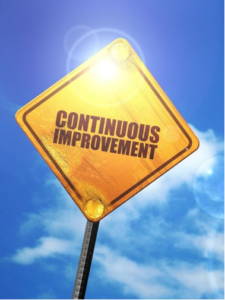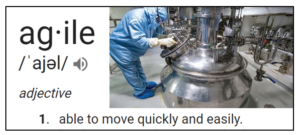 The healthcare industry is driven by scientific innovation, often in response to various public health crises. But while science & discovery often leap forward, the physical act of manufacturing a drug can lag behind.
The healthcare industry is driven by scientific innovation, often in response to various public health crises. But while science & discovery often leap forward, the physical act of manufacturing a drug can lag behind.
A recent article at PharmTech (Breaking Through Obstacles to Improve Drug Manufacturing) bemoans the barriers to continuous process improvement.
“We saw what the industry can do and what regulators can support when the Ebola virus struck, and vaccines, which usually take over a decade to develop and approve, were developed and released in months,” says Maik Jornitz, CEO of G-CON. “Why can’t we bring these approaches for the urgent to the normal, and create a more rapid approval approach?” he asks.
I made this point in a post on the Pharma Industry and Regulatory Agencies back in April – and it is still quite applicable. Fact is, technology is shifting faster than industry can keep up – let alone the regulators. And even with the best of intentions, the regulations themselves often arrive only after they are long overdue.
Because of the nature of our work and the fact that lives depend on us getting it right – both in terms of safety and efficacy – caution is, of course, absolutely critical.
There are times, though, when it feels like we’re talking about finally adopting flip phones as the world contemplates the eighth generation of smart phones.
Fractured Globalization
In the 30+ years we’ve spent developing APIs for drug companies, we’ve seen the pharma industry become globalized to a degree never even imagined. Our products alone end up in drugs spanning the globe – more than 85 countries at last count.
But, in light of the fractured regulatory standards worldwide, this globalization hasn’t streamlined manufacturing. Quite the opposite, in fact – as captured by this sentence in the PharmTech article: “One year, he says, Sanofi produced 83 batches of one of its vaccines according to 55 different configurations/variations, depending on the region involved.”
A More Agile Pharma Industry?
 So what’s the answer? Pharma and its regulators need to become more agile – and as the article points out, it isn’t impossible, and it must be a collaborative effort between industry and regulators.
So what’s the answer? Pharma and its regulators need to become more agile – and as the article points out, it isn’t impossible, and it must be a collaborative effort between industry and regulators.
The FDA describes continuous improvement as “an essential element in a modern quality system and it aims at improving efficiency by optimizing a process and eliminating wasted efforts in production.” The challenge is getting the various parties on board with the overarching goal of modernization – refocusing from a mindset of ‘best historically-proven practices’ to ‘best available practices.’
The FDA is moving in this direction. Objectively, the FDA and other leading regulatory agencies have been enthusiastic supporters of improving pharma manufacturing processes. This has led to the widespread adoption of QbD, PAT and other innovative methodologies to enhance process control and quality.
The FDA is also evaluating how to best address changes to manufacturing processes post drug approval – reducing the need for multiple review cycles or CMC supplements. Again, this comes down to a collaborative effort: companies will need to be able to provide sufficient assurances that they understand how the changes they make will be controlled, and what the potential risk factors will be for both drug quality and efficacy.
The biggest challenge seems to be in harmonizing the view of process improvement globally. As the article notes, regulatory bodies tend to focus on the countries or regions for which they have responsibility, while pharma companies tend to consider a product’s markets.
If you have even a passing interest in drug manufacturing, this PharmTech article is worth a read: Breaking through obstacles to improve drug manufacturing.










